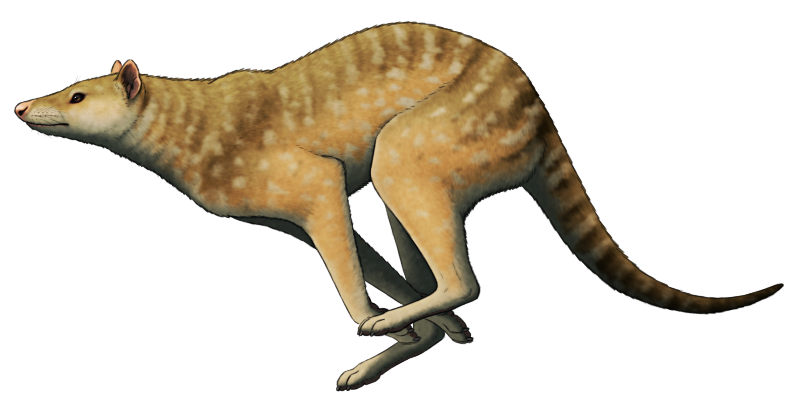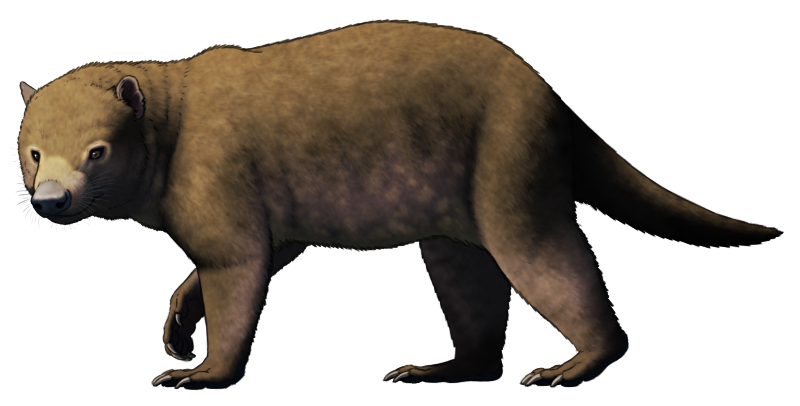It’s September, the Cambrian series has been delayed until later this year, so instead let’s get speculative – it’s time for the return of #Spectember! I can’t manage daily content this time around, but I still have plenty of submitted concepts left over from last time.
So let’s get started with some marsupials suggested by someone crediting themselves only as Bruno Drundridge:

The cheetah quoll (Tachydhigul pictus) inhabits the Australian savanna several million years in the future. Descended from the tiger quoll, it stands about 50cm at the shoulder (~1’8″) and much like its feline namesake has become specialized for short bursts of rapid pursuit – although it’s not capable of reaching quite the same record high speeds as cheetahs, actually more comparable to a greyhound at top speeds of around 70km/h (~45mph).
Its main prey are small-to-medium-sized fast-hopping macropods and the descendants of invasive rabbits. It stalks its targets up to a close range and then relies on its speed and acceleration to close the gap, unable to keep up a chase for more than a few hundred meters.
Upon a successful kill it gorges itself on the soft parts of its prey as quickly as it can, because it often has to watch out for a larger and more physically powerful predator.

The devil-bear (Pseudoursus drundridgei) descends from a population of Tasmanian devils reintroduced to mainland Australia in the early 21st century. Close in size to to smaller examples of the placental bears it convergently resembles, it stands about 70cm at the shoulder (~2’4″) – making it one of the biggest marsupial carnivores to ever live, rivaling the ancient Thylacoleo.
Powerful hyena-like crushing teeth let it crunch through flesh and bone alike, and while it mainly preys on large wombats its size and bulk also allow it to easily bully smaller predators like the cheetah quoll away from their carcasses.

I love the Cheetah Quoll (Tachydhigul pictus). I am just finishing a book about the origin of marsupials and their migration to Australia. The last chapter deals with modern marsupials and the demise of many species. I love to use the Cheetah Quoll because it gives some hope that marsupials will live on and even evolve into different forms, giving some hope about their future even though it is an imagined creature. It would help instead of the justified but dire stories and consequences that are reported about marsupials in the media. The picture It would be fully and correctly acknowledged.
Thank you
Steve